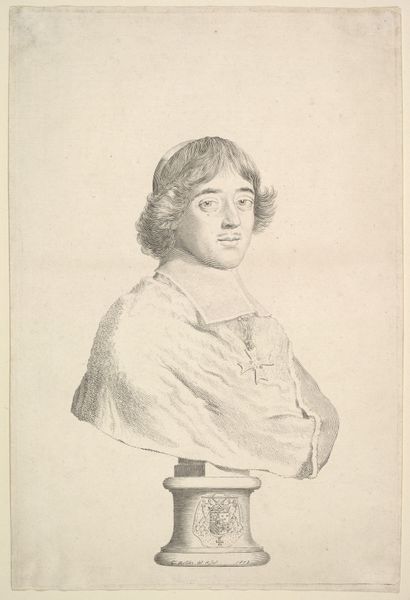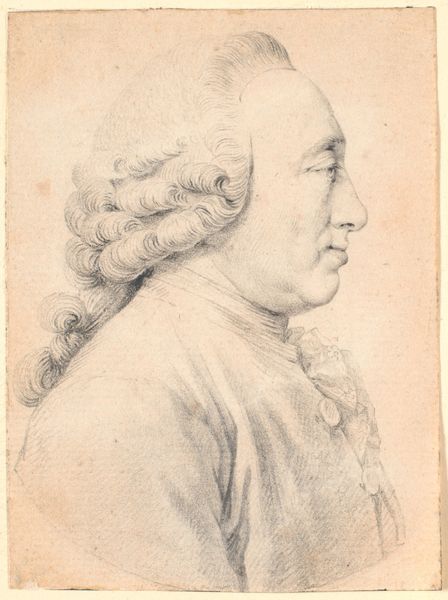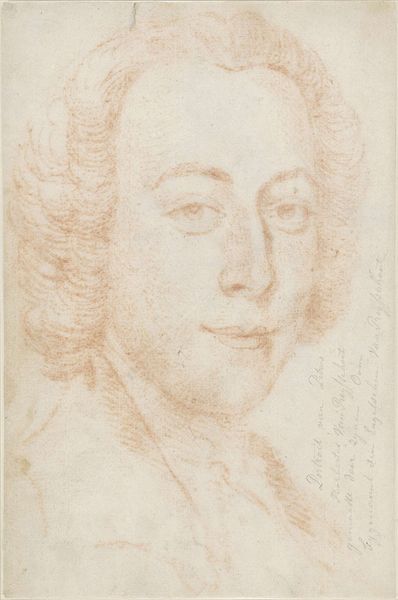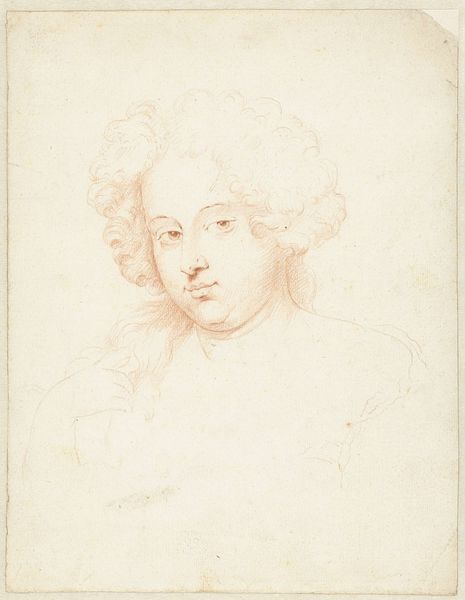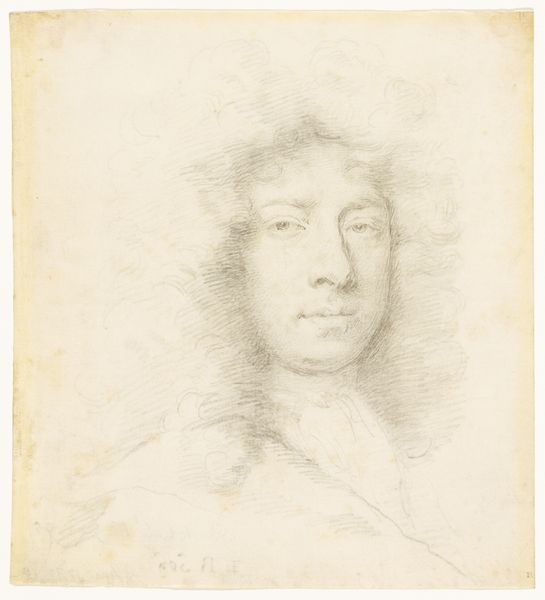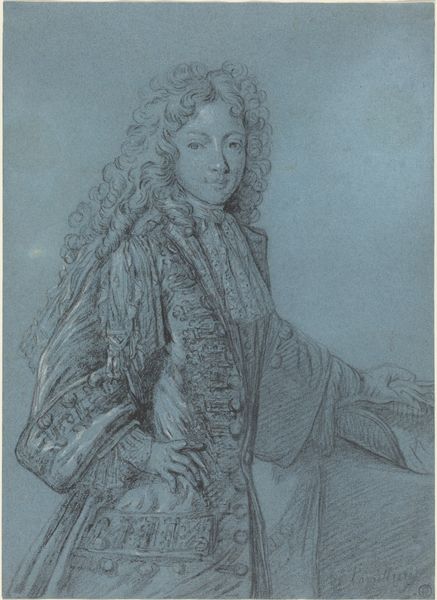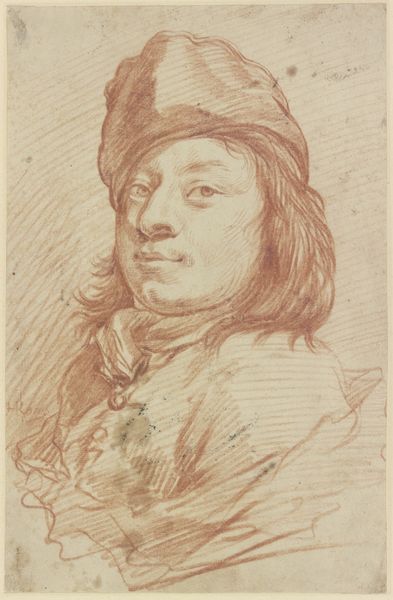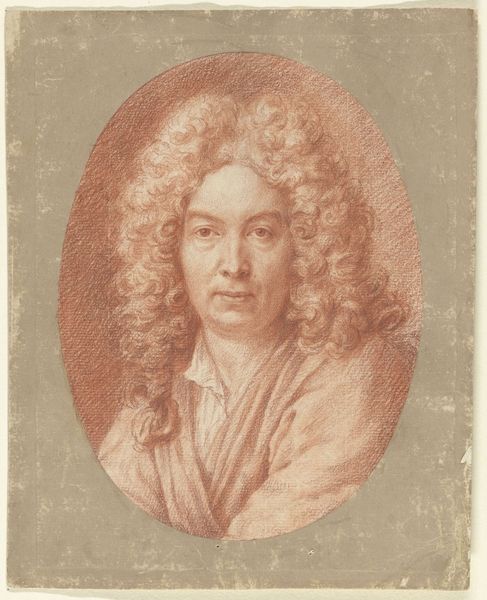
drawing
#
drawing
#
pencil sketch
#
possibly oil pastel
#
portrait reference
#
pencil drawing
#
underpainting
#
animal drawing portrait
#
portrait drawing
#
watercolour illustration
#
italy
#
watercolor
#
fine art portrait
Dimensions: 8 1/8 x 5 3/4 in. (20.64 x 14.61 cm) (sheet)8 5/16 x 5 7/8 in. (21.11 x 14.92 cm) (mount)19 3/4 x 15 3/4 in. (50.17 x 40.01 cm) (outer frame)
Copyright: Public Domain
Ottavio Leoni created this "Portrait of an Adolescent Boy" using chalk on paper, a medium that lends itself to capturing fleeting likenesses. Chalk's powdery texture allows for soft gradations of light and shadow, as seen in the boy's delicate features and voluminous hair. The artist coaxes the material to create a sense of depth and volume on a relatively flat surface. The very act of drawing with chalk, a direct and immediate process, suggests an intimacy between the artist and the sitter. Consider the labor involved in creating the boy’s elaborate lace collar, which would have taken hours, if not days, to produce. Leoni’s chalk marks echo the labor of the lacemaker, reminding us of the collaborative nature of portraiture during this time. The success of this portrait lies not only in the artist's skill, but also in the material's capacity to capture the subtleties of human presence and social context. By considering the materials, process, and context, we gain a fuller appreciation of its meaning and significance.
Comments
minneapolisinstituteofart about 2 years ago
⋮
Ottavio Leoni was a prolific, sensitive portraitist in 17th-century Rome, executing portrait drawings from life and etchings of the city's aristocrats, clerics, and artists. His preferred medium was "à trois crayons," combining black, red, and white chalk, often on blue paper, here faded, and he has additionally incorporated brown chalk in the long locks of the teenage sitter. The inscriptions indicate that the present portrait was executed in July ("luglio") of 1621--the year mostly cropped at lower edge, but confirmed by the artist's numbering system (see number "195"). Scholar and collector Alfred Moir (2000) observed that the sitter's "complacent expression, starched collar, and tailored doublet characterize him as prosperous and probably of a privileged class." Moir suggested his plump face has a familial resemblance with Paolo Giordano II Orsini, duke of Bracciano (1591–1656), a flamboyant figure in Rome whom Leoni represented in at least four surviving portrait drawings as well as a number of etchings. The sitter is too young to be Orsini and too old to be his son, but he might be Paolo Giordano II's younger brother and ultimate heir, Ferdinando Orsini (before 1606–1660), duke of Bracciano from 1656 to 1660.
Join the conversation
Join millions of artists and users on Artera today and experience the ultimate creative platform.

